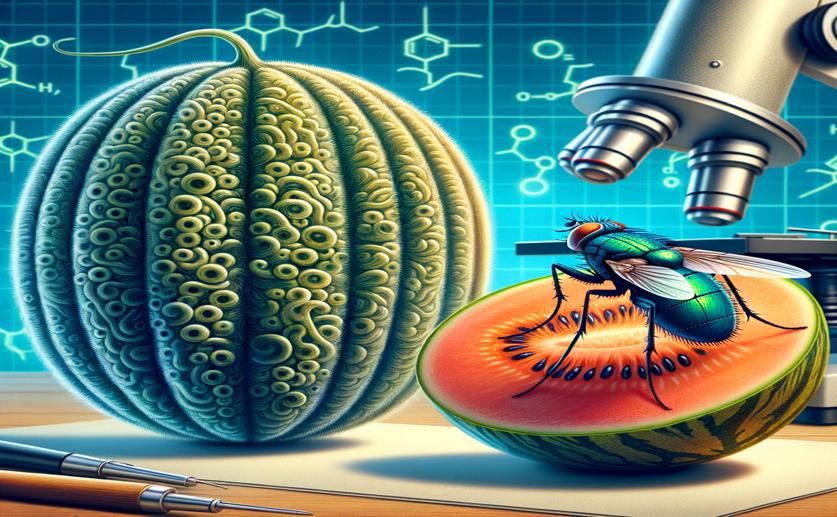
Exploring Local Bacteria for Natural Toxins to Combat Melon Fruit Fly
Greg Howard
30th July, 2024

Image Source: Natural Science News, 2024
Key Findings
- Researchers at Indira Gandhi Krishi Vishwavidyalaya screened 50 indigenous Bacillus thuringiensis (Bt) strains against melon fruit fly larvae
- Several indigenous Bt strains showed significant toxicity against the larvae, suggesting potential for biopesticide development
- The study identified specific Cry genes responsible for the toxicity, providing a foundation for enhancing biopesticide efficacy
References
Main Study
1) Screening of indigenous Bacillus thuringiensis for dipteran active cry gene profiles and potential toxicity against melon fruit fly, Zeugodacus cucurbitae (Coquillett)
Published 29th July, 2024
https://doi.org/10.1186/s41938-024-00811-6
Related Studies
2) Cloning and characterization of a novel crystal protein from a native Bacillus thuringiensis isolate highly active against Aedes aegypti.
Journal: Current microbiology, Issue: Vol 54, Issue 4, Apr 2007
3) A structure-based nomenclature for Bacillus thuringiensis and other bacteria-derived pesticidal proteins.
4) A Novel Solid Artificial Diet for Zeugodacus cucurbitae (Diptera: Tephritidae) Larvae With Fitness Parameters Assessed by Two-Sex Life Table.



 31st March, 2024 | Jim Crocker
31st March, 2024 | Jim Crocker